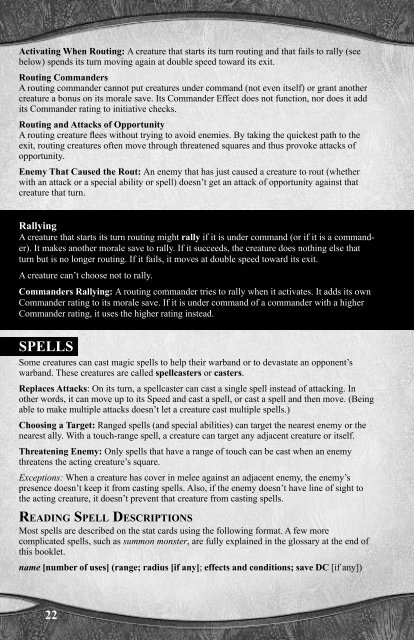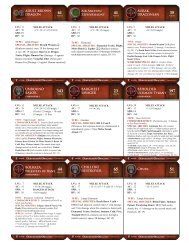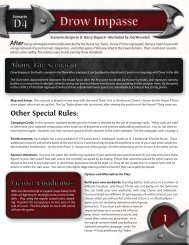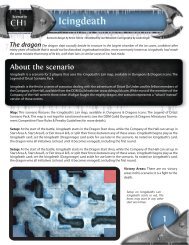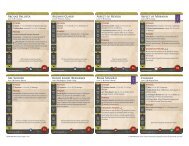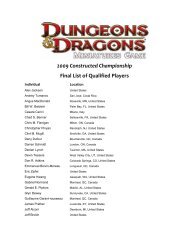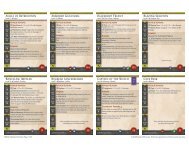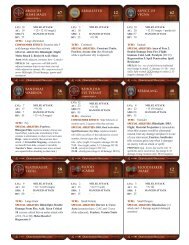You also want an ePaper? Increase the reach of your titles
YUMPU automatically turns print PDFs into web optimized ePapers that Google loves.
Activating When Routing: A creature that starts its turn routing and that fails to rally (see<br />
below) spends its turn moving again at double speed toward its exit.<br />
Routing Commanders<br />
A routing commander cannot put creatures under command (not even itself) or grant another<br />
creature a bonus on its morale save. Its Commander Effect does not function, nor does it add<br />
its Commander rating to initiative checks.<br />
Routing and Attacks of Opportunity<br />
A routing creature flees without trying to avoid enemies. By taking the quickest path to the<br />
exit, routing creatures often move through threatened squares and thus provoke attacks of<br />
opportunity.<br />
Enemy That Caused the Rout: An enemy that has just caused a creature to rout (whether<br />
with an attack or a special ability or spell) doesn’t get an attack of opportunity against that<br />
creature that turn.<br />
Rallying<br />
A creature that starts its turn routing might rally if it is under command (or if it is a commander).<br />
It makes another morale save to rally. If it succeeds, the creature does nothing else that<br />
turn but is no longer routing. If it fails, it moves at double speed toward its exit.<br />
A creature can’t choose not to rally.<br />
Commanders Rallying: A routing commander tries to rally when it activates. It adds its own<br />
Commander rating to its morale save. If it is under command of a commander with a higher<br />
Commander rating, it uses the higher rating instead.<br />
SPELLS<br />
Some creatures can cast magic spells to help their warband or to devastate an opponent’s<br />
warband. These creatures are called spellcasters or casters.<br />
Replaces Attacks: On its turn, a spellcaster can cast a single spell instead of attacking. In<br />
other words, it can move up to its Speed and cast a spell, or cast a spell and then move. (Being<br />
able to make multiple attacks doesn’t let a creature cast multiple spells.)<br />
Choosing a Target: Ranged spells (and special abilities) can target the nearest enemy or the<br />
nearest ally. With a touch-range spell, a creature can target any adjacent creature or itself.<br />
Threatening Enemy: Only spells that have a range of touch can be cast when an enemy<br />
threatens the acting creature’s square.<br />
Exceptions: When a creature has cover in melee against an adjacent enemy, the enemy’s<br />
presence doesn’t keep it from casting spells. Also, if the enemy doesn’t have line of sight to<br />
the acting creature, it doesn’t prevent that creature from casting spells.<br />
READING SPELL DESCRIPTIONS<br />
Most spells are described on the stat cards using the following format. A few more<br />
complicated spells, such as summon monster, are fully explained in the glossary at the end of<br />
this booklet.<br />
name [number of uses] (range; radius [if any]; effects and conditions; save DC [if any])<br />
22


